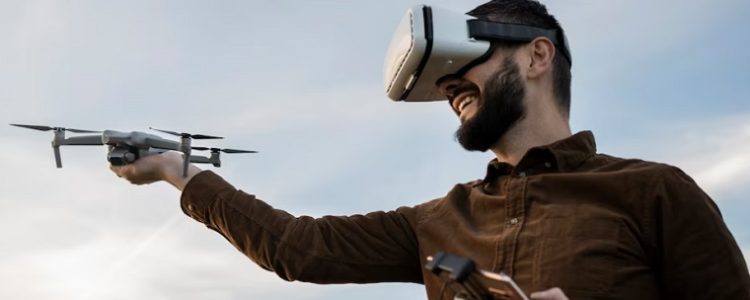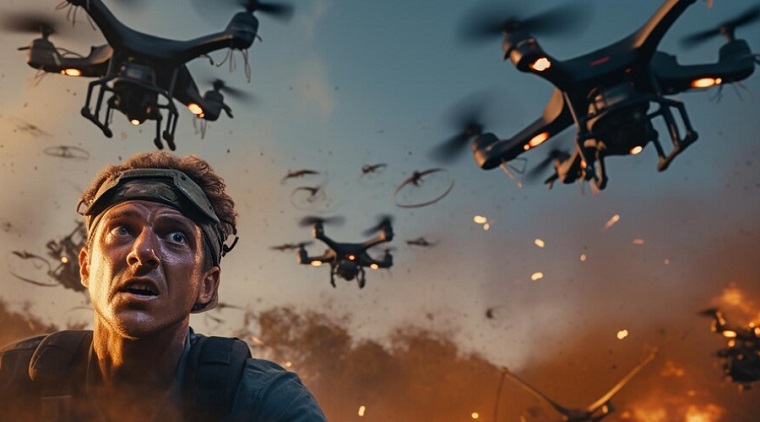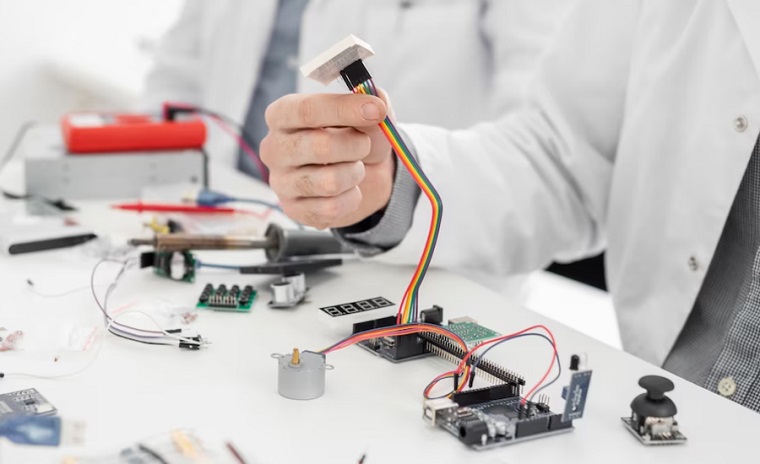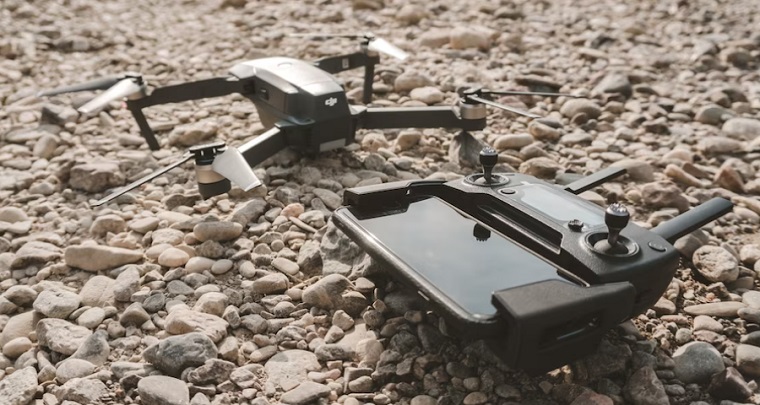

Кожен ваш донат на FPV дрон - це мінус одна одиниця орчих боєприпасів та техніки

Although drones began to appear en masse only recently, they are gradually becoming part of the daily routine of our lives. In this article, I talk about FPV drones, how they differ from regular drones, and their advantages and disadvantages. You will also learn which areas FPV drones have found their best use and what parts they consist of. You may be inspired by this and create your drone with first-person control, in which case you need to know everything you need to fly.
FPV drone – a drone with a first-person view. It means the pilot of such a drone sees everything that the drone camera can see as if he were inside this flying device.
Structurally, there is no difference between an FPV drone and a regular drone that is controlled by observing from the ground. A smartphone can be attached to an ordinary drone or it can be equipped with a video camera.
The main divergence of the FPV drone is a camera that transmits a video image in high quality, at a high speed in real-time. The frame delay of such a camera can vary from 100 to 200 ms, which is quite close to the video transmission speed of modern action cameras.
One of the important characteristics of a drone camera is the FOV (Field of View), which defines the angle of view that the drone pilot can see. The larger the field of view angle, the more realistic the visual perception, and the less likely the drone will collide with other objects.
When flying in FPV mode, the video stream is transmitted online to the screen of the control panel, or in special video glasses using wireless technologies. In this case, video glasses are a special device with built-in micro screens, which helps to achieve the effect of full immersion of the pilot. The higher the resolution of the built-in screens in the glasses and the higher the image quality then the greater the sense of immersion.
As with everything in this world FPV drones have their advantages and disadvantages compared to conventional multicopters. In some of their properties, first-person drones are the complete opposite, for example in terms of weight or speed.
As a rule, ordinary drones have more weight, which is because they are equipped with more sensors, stabilizers, and more capacious batteries. In contrast to this, FPV drones are lighter and more mobile.
Because speed is a relative concept, we give average numbers depending on the manufacturer and model. An ordinary drone has an average speed of about 50 kilometers per hour, while a modern FPV drone can fly more than 200 km/h. This is facilitated by a compact body, light materials, and lower overall weight.
As for control, regular drones win here because of a large number of sensors and stabilizers, their control is safer and smoother. So it is easy for a beginner to learn flight control because a regular drone moves only in vertical and horizontal planes. Also, due to the integration of sensors and software, the operator receives hints regarding control or a dangerous approach to a foreign object.
An FPV drone has no such limitations, which makes the control process more complicated and increases the risk of the drone failing due to damage caused by inept control. But pilots can turn such a drone into any plane, which makes it an indispensable tool for shooting spectacular views, for example, for cinema or action shows.
Because of their large dimensions, regular drones have larger capacity batteries that allow them to stay in the air longer. Depending on the actions of the drone, the operator can work for about an hour.
FPV drones have a light body and lightweight batteries for high speed. The batteries on such drones have a smaller capacity.
The disadvantage of ordinary drones is that even due to a small malfunction you have to send the device to the manufacturer’s service center to not violate the integrity of the structure. The repair is possible only if specialized equipment is available. In this regard, FPV drones are the complete opposite, as they can be repaired and serviced at home with spare parts and a common set of tools.
FPV drones were developed primarily for research and transportation. But despite their original purpose, they have found application in many different fields and industries thanks to their maneuverability, presence effect, and unique perspective.
Humanity has been dreaming of mechanized assistants for a long time. One of the first inventors was Nikola Tesla. He not only proposed a theoretical model of a remotely controlled drone but also made it in practice. When Tesla patented the invention, he called it an instrument of exploration, transportation, and warfare. So today, these are the main areas of application of unmanned remotely controlled vehicles.

According to the use of drones in the military or actions close to them, drones can be divided into reconnaissance and strike. Kamikaze drones can also be classified as impact drones.
FPV drones are the most used in reconnaissance and surveillance, as they can be used to detect the location of enemy equipment and manpower. They also help adjust artillery and air strikes, making their strikes more accurate and devastating. FPV drones transmit in real-time the combat situation, which allows the military leadership to quickly and timely respond to changes, and adapt military tactics and strategies, according to the circumstances.
Using FPV drones in scientific research allows the collecting of valuable data from inaccessible places, providing more accurate and informative research results in various disciplines. Provide access to remote or dangerous places where it is dangerous or difficult for scientists to get to, for example, deserts, jungles, highlands, and others.
In archaeology, such drones allow aerial photography of potential excavation sites to identify signs of ancient settlements and develop an excavation plan. Including, helping to clarify the maps of existing excavations and creating new ones.
FPV drones play an invaluable role in oceanography and marine research because due to high water pressure, human access to many underwater areas is limited or impossible. They help to study unique ecosystems, and bottom geology, and even find treasures in places of shipwrecks.
Just like in underwater research, drones with a first-person camera are indispensable assistants in volcanology. They allow researchers to study volcanoes and magmatic processes, as well as analyze emissions and changes in volcanic activity from close range.
The use of FPV drones in cinema makes it possible to make incredible and spectacular shots from non-standard angles and dynamic shooting, which were simply impossible before the advent of this technology. Such drones make it possible to fly close to objects, which creates the illusion of presence during the pursuit, and to fly through narrow spans and small obstacles. This technology provides a wide field for experiments with unusual angles and movements, which adds novelty and creativity to filmmaking.
FPV drones can film spectacles such as extreme sports, water races, downhill skiing, and other activities that are difficult to film from the ground. Since the drone can fly more than 200 km/h, it allows you to catch up with high-speed objects and create mind-blowing shots that cannot be done using regular drones.
Drones from the first person not only observe but can also be participants in the competition. The races take place on specially designed tracks that include various obstacles and elements to test the piloting skills and reactions of the participants. Tracks can be located both in open areas and in closed rooms, and in the form of obstacles, there can be special rings and gates.
In general, the use of FPV drones in cinematography and entertainment requires experienced pilots – camera operators who can combine technical skills with artistic vision. This can greatly enrich the viewers’ visual experience and lets them create unique and exciting scenes.
Like many other devices, an FPV drone has its structure and consists of parts. The list below shows the maximum possible equipment. For example, a GPS module or an additional battery is not mandatory, but improves the functionality of the controlled device, increasing its capabilities. Next, we consider some parts separately and analyze their main characteristics and properties.

Complete set of drones from the first person:
If you assemble a multirotor drone yourself, consider that each frame is designed for the corresponding maximum size of propellers. This is affected by the distance between the motors on the case itself.
You have to pay attention to the size of the holes for the flight controller, speed controller, camera, and other vital modules. Modern frames for copters are made of composite materials, which allows you to significantly reduce weight without losing strength.
The main characteristics of the motor are its dimensions and the number of revolutions per minute. So, for example, if you see an electric motor marked 2808-1400 KV, it means that the stator of this motor has a diameter of 28 mm and a height of 8 mm. In turn, the KV indicator is the number of revolutions per minute for 1 volt.
In our case, this number is equal to 1400 rpm. There is a direct connection between the dimensions of the drone and the KV indicators. The larger the drone, the fewer revolutions it produces, the smaller it is, the greater the number of KV.
The next important characteristic of this module is thrust. Thrust is measured in grams or kilograms of weight that the motor can lift into the air. The efficiency of the motor is measured in the ratio of the amount of weight per unit of electricity, i.e. 1 Watt.
Important properties of propellers are diameter, number of blades, and pitch. In sum, this affects the total thrust that the copter’s electric motors can develop, power consumption, and noise. When ordering propellers separately, it is important to check the mounting type to ensure they are compatible with your motors.
At the moment, the most common sizes of flight controllers are 20×20 and 30.5×30.5 millimeters. This must be taken into account when selecting the frame/body of the drone and the speed controller.
The brain of the flight controller is a processor that collects and analyzes accelerometer and gyroscope data for the correct orientation of the device in space. FCs are equipped with F3, F4, and F7 processors. Currently, F7 is the most modern and efficient processor.
Another important parameter of FC is the number of ports (UART) and outputs (PWM) available in it, which allow you to connect additional equipment and modules. The greater the number of ports and outputs, the higher the cost of the FC.
Also, carefully check the number of motor outputs, it should correspond to the design of your drone. If you are going to assemble an octocopter with eight motors, then a standard FC with four motors is not compatible.
The flight controller is equipped with a barometer, which measures the height of the drone. Some FCs also have Bluetooth/Wi-Fi technology for remote programming and configuration of the controller from a computer or phone.
The speed controller or Electronic Speed Controller, as well as flight controllers, are mostly found in 20×20 and 30.5×30.5 millimeter formats. Motors and FCs are directly attached to the ESC.
The main parameters of ESC are operating voltage and maximum current. The operating voltage is calculated depending on the battery and the voltage of each section. You have to select the maximum current for the motors, but you have to make a reserve of amperage. It is not recommended to take ESC with the same amperage as the motors. Both of these indicators are always marked on the body of each speed controller.
Separately, it is worth mentioning the combined flight controller with a speed controller (All-in-one/AIO). There are speed controllers with flight controllers integrated into one microcircuit on the market. It has advantages in terms of compactness and lighter weight, but if one of the modules on the combined board fails, you lose both. For the price, integrated solutions cost the same as ESC and FC together.
The main characteristics of the drone’s receiver are communication protocols, reverse connection, and physical dimensions. A communication protocol is a standard by which a radio transmitter and a receiver exchange data. Current protocols are ELRS and Crossfire. Flysky and FRsky protocols are considered deprecated and are not recommended for use.
The most popular operating frequencies of radio receivers are 2.4 GHz and 915/868 MHz. Receivers with an operating frequency of 2.4 GHz have small antennas, but for example, a frequency of 915 MHz is better for long distances and controlling the drone through foreign objects.
Receivers can also transmit telemetry. For example, battery voltage, GPS coordinates, speed, and other data.
An important parameter for a drone camera is the resolution if it is digital. In analog cameras, this indicator is TVL (TV Lines), the number of vertical lines. The higher it is, the better the camera is. It is also necessary to take into account the viewing angle of the camera and light sensitivity (LUX). With low light sensitivity, flights are possible even at dusk.
Like cameras, video transmitters can be both digital and analog. The most common operating frequency for VTX is 5.8 MHz.
For this module, an important role plays power, which is measured either in milliwatts or in watts. VTX with high power heat up more, so they are equipped with their own coolers. The greater the power, the greater the distance the video signal is transmitted.
The video transmitter connects to the antenna. The size of the antenna also affects the range of video transmission. Antenna connectors must be compatible with VTX connectors, otherwise, you have to use an adapter for increasing the drone’s weight.
Today, the price for FPV drones, depending on options and equipment, can range from $100 to several $1000. You can buy a ready-made drone, or save money and assemble it yourself from various modules and components that we reviewed in this article.
Below is a comparison table of popular FPV drone models, their specifications, and prices. The prices are indicated at the time of writing the article, so they may change depending on the configuration at the time of your order. You can see tips on how to choose the right drone for flights here.
Below is a comparison table of popular FPV drone models, their specifications, and prices. The prices are indicated at the time of writing the article, so they may change depending on the configuration at the time of your order. You can see tips on how to choose the right drone for flights here.
| Modelі | Weight (grams) | Video | FPV | Price |
| DJI Avata Explorer Combo | 410 | 4К | Goggles | 1278 |
| Autel Robotics EVO Lite+ | 1191 | 1920×1080 | Display | 1325 |
| DJI Mavic 3 Pro with DJI RC | 1650 | 4K, 5.1K | Display | 2199 |
| DJI Air 3 Fly More Combo with DJI RC 2 | 1090 | 4К | Display | 1602 |
| DJI Mini 3 (DJI RC) | 640 | 4К | Display | 609 |

Training pilots to operate FPV drones requires a combination of technical skills, practice and an understanding of safety. First of all, it is better to start training on a simulator to practice virtual drone control. It helps you learn basic maneuvers and skills without risking damage to the drone.
Next, practice takeoffs and landings on a real aircraft. Control, when the drone is close to the surface, can be particularly difficult. Start with simple flights and gradually add complex maneuvers such as turns, climbs, dives, etc.
FPV drone control requires patience and constant practice. The more time you spend practicing and mastering the skills, the more experienced and confident you become in flying the drone.
In this article, we have explored the pros and cons of drones from the first person compared to regular drones, their configuration, and their structure. What should you pay attention to if you assemble an FPV drone with your own hands and what parts should be used to best achieve your goals. Also, we found out the cost of popular models of the most common manufacturers.
FPV drones have found applications in a variety of fields, including recreational flying, drone racing, videography, combat, and scientific and research purposes. They allow pilots to experience the adrenaline of flight and enjoy breathtaking views from above, as well as perform tasks that require precise control and aerial survey of the terrain.